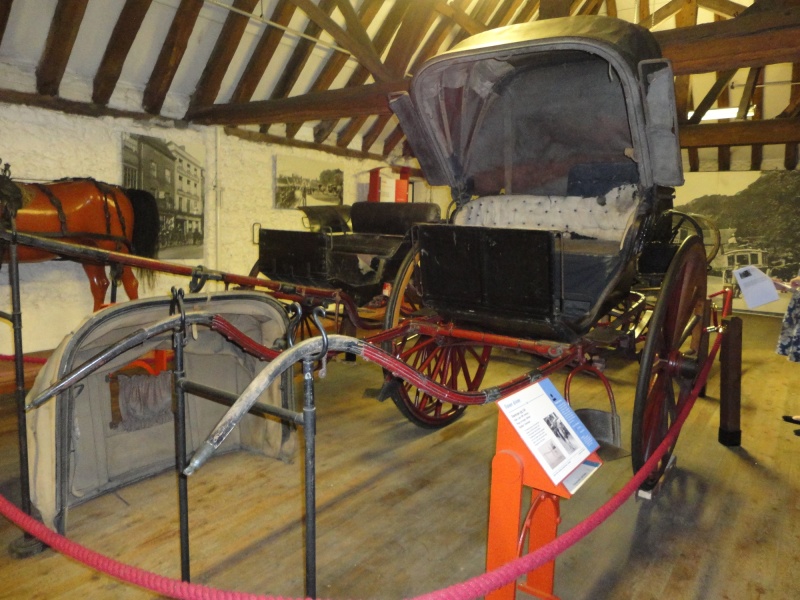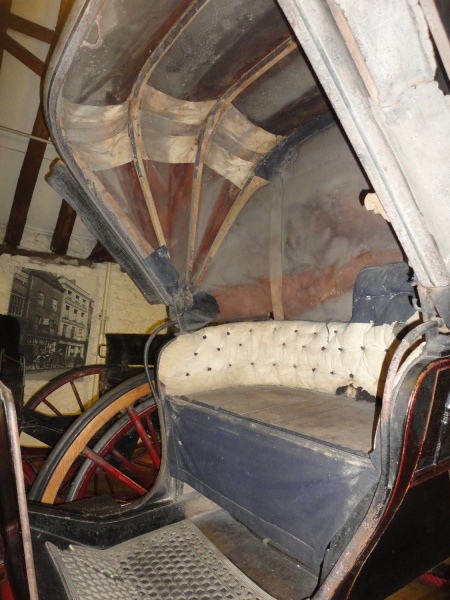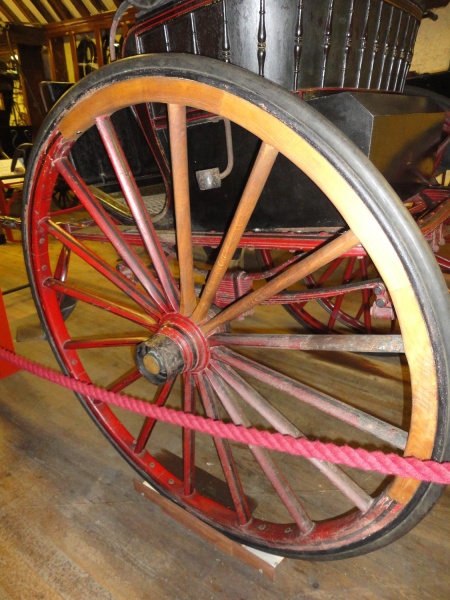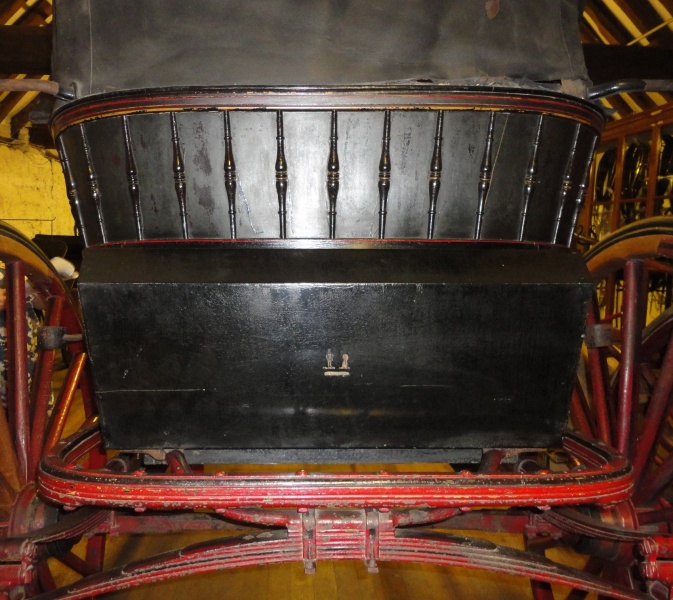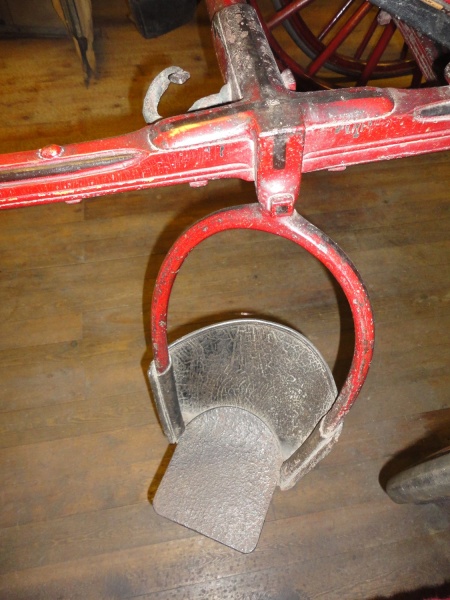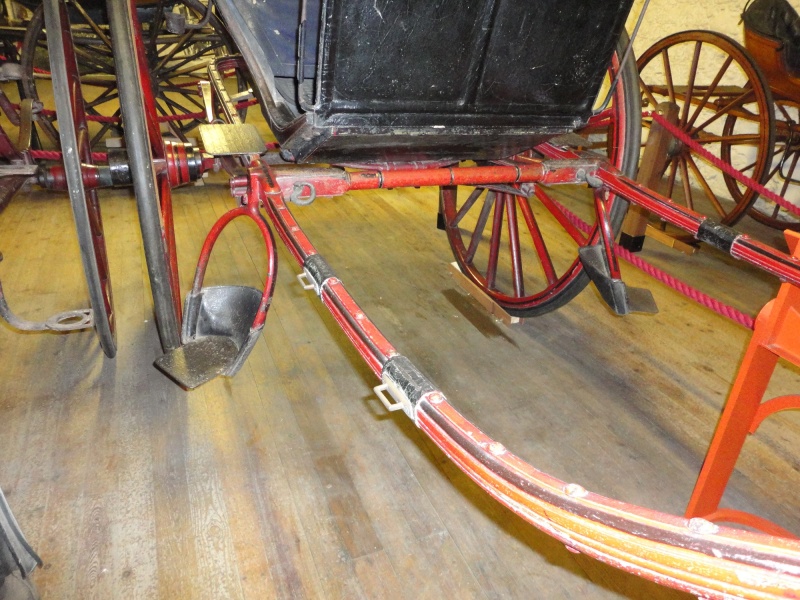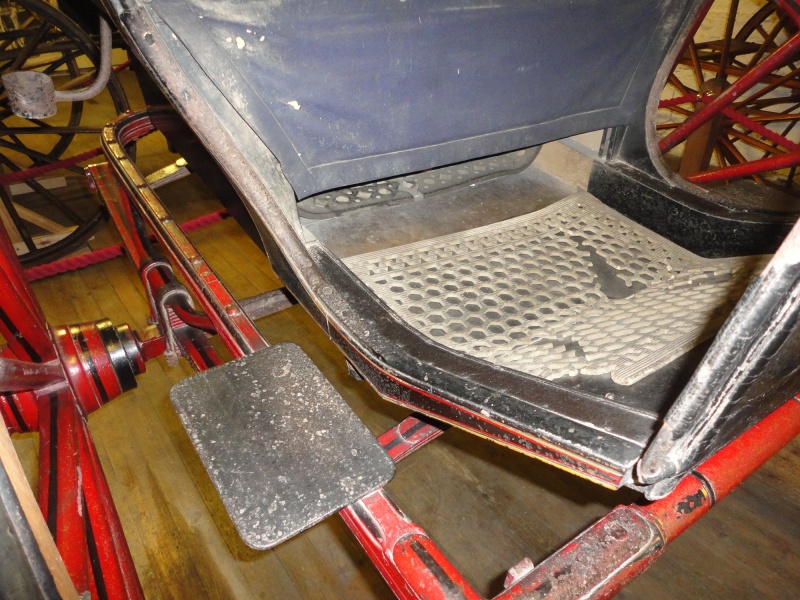Use the dots above to scroll through images.
Listed in 1 collection
Listed at 1 museum
Listed for 1 maker
Quick Details
Summary of Stanhope Gig
This carriage is exactly as a Stanhope Gig ought to be. The body has a Tilbury boot (vertical rear panel and sloping top panel, angular profile), swan neck shafts that wrap around the back and the classic Stanhope spring system consisting of two side and two cross springs. This carriage was used by Sir Tyrwhitt-Drake, the founder of the carriage museum in Maidstone.
Stanhope gigs are named after their designer, the famous amateur driver the Honourable Fitzroy Stanhope. The Stanhope and other types of gig such as the Tilbury and Cabriolet proved to be very popular and were common sights on both town and country roads throughout the nineteenth century.
Dimensions
Height: 8ft 2”
Length: 11ft 6”
Width: 5ft 7 ¾”
Full description
A classic Stanhope with a body with a Tilbury boot (vertical rear panel and sloping top panel, angular profile). The elegant swan neck shafts wrap around the back of the carriage and the body sits on the Stanhope spring system consisting of two side and two cross springs.
The seatback is curved with sham spindles and slightly over hangs the boot. A leather head is attached and supported by folding irons that are fixed to the corners of the seat back it has a splash guard on each side, the leather on these is fragmentary. At the front of the body is a sloping footboard covered with a rubber mat. The leather dashboard has a grab handle in brass on each side, on the right fragments of a leather serving are evident. Another elegantly shaped grab handle is attached to the front of the side panels of the carriage. The upholstery is in pretty poor condition being very fragmentary. The seats look to have once been covered with a blue box cloth, this material only survives on the passenger lazy back and the seat valance. The remaining seat is buttoned and covered in a cream coloured cotton (?) material. Sadly, the lining to the hood is missing but it does at least give the opportunity to appreciate the construction of a carriage head as the framework is visible.
To mount the carriage on each side is a bell step fixed to the shafts at the splinter bar. On the top of the shaft by the footboard is a rectangular step plate with a jagged surface. Plain curved lamp brackets are fixed to the underside of the seat where it slightly protrudes from the boot. This carriage has had considerable parts of its wheels replaced. The new sections have been left unpainted. They are 16 spoke Warner pattern wheels on collinge patent axles and rubber shod. Stanhope gigs are always sprung on two cross and two side springs.
Stanhope Gigs were driven by gentlemen around town and were usually harnessed to a large horse hence the accentuated curve on the swan neck shafts. This example would have been suitable for a 16.3hh horse. Brass breeching staples, tug stops and shaft tips are fitted. The splinter bar has two fixed pig tail trace hooks.
The body is painted black with red lining and the undercarriage, shafts and wheels are a deep red with black and yellow lining.
Condition report
This Stanhope Gig has had a fair amount of work done over the years. It was used on a regular basis by the late Sir Tyrwhitt-Drakeand so has the scars of years of wear and tear. Some felloes and spokes have been replaced in the wheels. The leatherhead is fragile and its lining is missing and the upholstery is in poor condition. The body and shafts seem sound.
Access information
This Stanhope Gig is in the care of the Tyrwhitt-Drake Carriage Museum.
Maidstone Museum and Art Gallery
St Faith's Street,
Maidstone
ME14 1LH
Picture credit
Maidstone Museum/Amy Bracey

 Carriage Foundation
Carriage Foundation